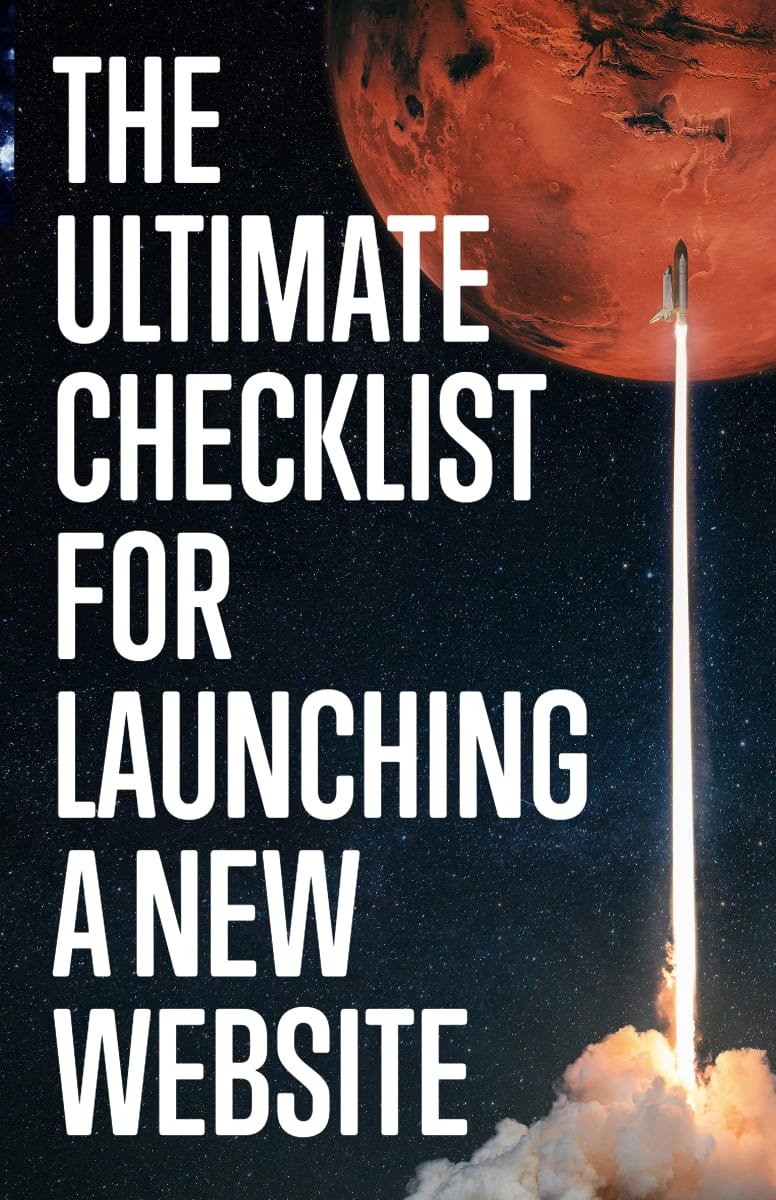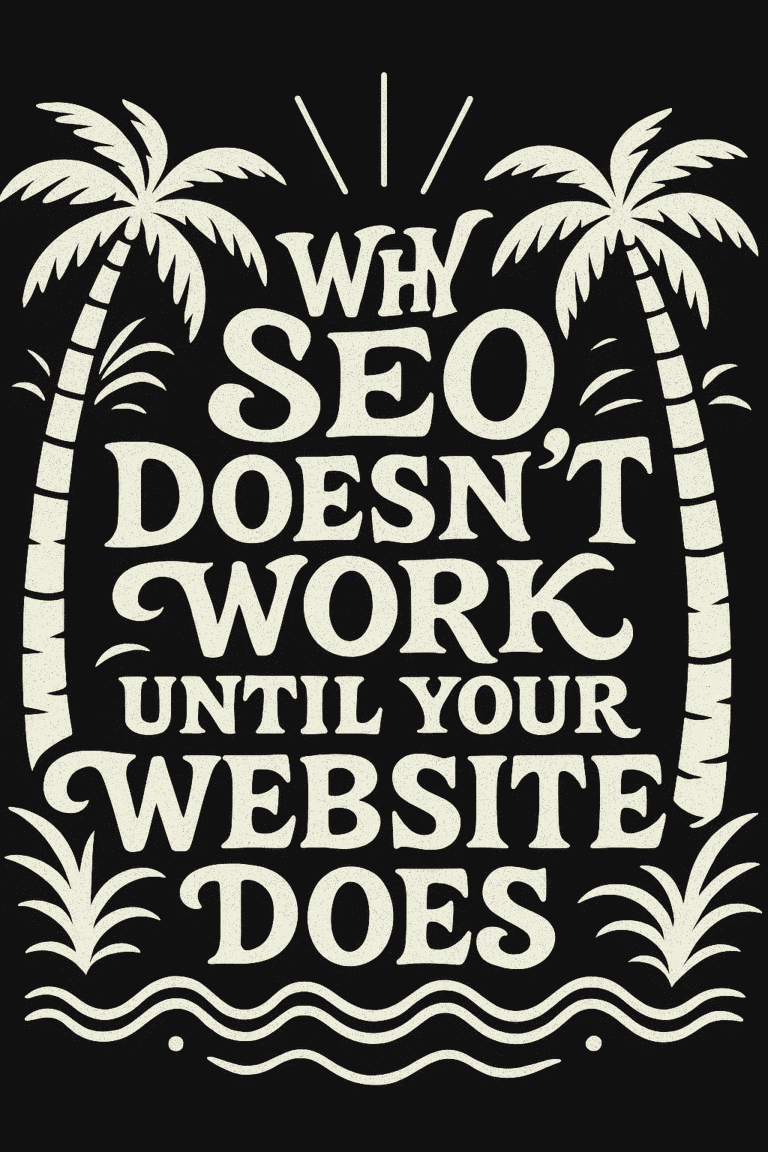
Launching a new website is an exciting but complex process that requires careful planning, thoughtful design, and meticulous attention to detail. Whether you’re an entrepreneur looking to showcase your products, a blogger eager to share insights, or a large corporation expanding your online presence, the initial steps you take will set the tone for your site’s success.
The importance of website planning and design cannot be overstated. It serves as the foundation of your online presence, and a well-designed site will not only attract visitors but also retain them, guiding them effortlessly through your content or products. Conversely, a poorly planned website can quickly deter potential customers or readers, resulting in lost opportunities.
In this comprehensive post, you’ll gain insights into crucial areas such as identifying your target audience, choosing the right platform, creating engaging content, ensuring functionality, focusing on security, and much more. So buckle up and get ready to dive into the world of website launching, tailored to both newcomers and seasoned professionals alike.
I. Planning Your Website
Identifying Your Target Audience
Understanding who you’re trying to reach is the first step in any successful website plan. Think about your ideal visitors’ age, interests, location, needs, and problems that your product or content can solve. Knowing your audience will guide the design, content, and functionality of your site.
Setting Clear Goals and Objectives
What do you want your website to achieve? Whether it’s to sell products, provide information, or showcase a portfolio, having clear and measurable goals will keep your project on track. Define what success looks like and set up ways to monitor progress towards those goals.
Choosing the Right Platform and Hosting Provider
Selecting the right platform is crucial for building your website. Different platforms cater to various needs, from e-commerce to blogging. Research and choose one that fits your goals and skill level. Also, select a reliable hosting provider that aligns with your budget and provides the necessary support and performance.
Creating a Content Strategy
Content is king, and planning what you’ll say and how you’ll say it is vital. Your content should reflect your brand’s voice and resonate with your target audience. Outline the types of content you’ll need, from blog posts to product descriptions, and create a schedule to keep everything organized.
Planning Your Budget
A website can be a significant investment, so it’s essential to outline your budget from the start. Consider costs like domain registration, hosting, design, development, and marketing. Being transparent about your budget helps prevent unexpected expenses and ensures that you allocate resources where they are most needed.
This initial planning phase lays the groundwork for your new website, and spending time on it now will pay dividends later. By carefully considering your audience, goals, platform, content, and budget, you’ll create a strong foundation for a successful website launch. Whether you’re building the site yourself or working with professionals, these steps will guide you towards a website that not only looks great but also performs well and achieves your business objectives.
II. Design and Development
Responsive Design
In an era of diverse screen sizes, a responsive design ensures that your website looks and functions well on all devices. This approach adapts layouts, images, and functionality to fit different screens, providing an optimal viewing experience for all visitors.
Developing a Cohesive Color Scheme and Branding
Your website’s visual appearance should reflect your brand’s identity. Developing a cohesive color scheme and branding is vital for creating a consistent and recognizable look. Consider your brand’s values, target audience, and industry standards when making these design decisions.
Incorporating Essential Design Elements
Great web design goes beyond aesthetics. Incorporate essential design elements such as clear headings, easy-to-read fonts, appealing visuals, and intuitive layouts. These components contribute to a website that’s visually pleasing and user-friendly.
Building User-Friendly Navigation
Navigation is the roadmap of your website, guiding visitors to the information they seek. Create clear and straightforward navigation, with logical categorization and descriptive labels. Consider employing common navigation patterns that users are familiar with, and avoid overcomplicating the structure.
Ensuring Mobile Compatibility
More and more users are accessing websites on mobile devices. Ensuring mobile compatibility isn’t just a nice-to-have—it’s a must. Test your site on various devices and browsers to make sure everything is functioning as intended. Utilize tools that offer mobile previews and consider hiring professionals to conduct comprehensive mobile testing if needed.
Design and development play a crucial role in the success of your website. A well-designed site not only looks good but enhances user experience and accessibility. From responsive layouts to cohesive branding, focusing on these aspects of design and development will help you create a site that appeals to your audience, aligns with your brand, and operates smoothly across different platforms and devices. It’s an intricate process that may require collaboration with skilled designers and developers, but the results can significantly impact your site’s performance and your overall online presence.
III. Content Creation and Optimization
Writing Engaging and SEO-Friendly Content
The content on your site needs to not only engage visitors but also be optimized for search engines. Write in a clear, concise, and engaging manner that resonates with your target audience. Use relevant keywords strategically but naturally within the content. Include strong call-to-action phrases that guide visitors towards taking the desired actions.
Integrating Visuals and Multimedia Elements
Visuals and multimedia can enhance the user experience and break up large blocks of text. Use high-quality images, videos, infographics, or animations that complement your content. Ensure these elements are optimized for web use to maintain loading speed and responsiveness across devices.
Optimizing Meta Tags and Headings
Meta tags and headings play a vital role in SEO. Include relevant keywords in your title tags, meta descriptions, and headings. Each page should have a unique title tag and meta description that clearly describe the content. Use header tags (H1, H2, H3, etc.) to structure your content and make it easier to read.
Implementing Internal Linking Strategies
Internal links connect different pages of your site and guide users through the content. Thoughtfully link related pages or blog posts within your site to improve navigation and help search engines understand the structure and relationships between different content pieces.
Content creation and optimization is an ongoing process that requires attention to detail, creativity, and an understanding of SEO principles. By combining engaging writing with strong visual elements and SEO best practices, you’ll create a site that’s appealing to both visitors and search engines. Whether you’re an experienced writer or working with a professional copywriter, these principles will help your content shine and contribute to a successful website launch.
IV. Functionality and Usability Testing
Testing Different Browsers and Devices
Your website must look and function seamlessly across various browsers (Brave, Chrome, Firefox, Safari, etc.) and devices (desktop, tablet, phone). Utilize cross-browser and device testing tools to check for compatibility issues and resolve any discrepancies that may occur.
Checking for Broken Links and Errors
Broken links and errors can frustrate users and negatively impact your site’s reputation. Regularly check your site for broken links, missing images, or 404 errors, and correct them immediately. Tools like Google Search Console can be instrumental in identifying these issues.
Analyzing Load Times and Performance
Slow loading times can lead to a poor user experience and higher bounce rates. Utilize tools like Google PageSpeed Insights or GTmetrix to analyze your site’s load times. Optimize images, reduce the use of heavy scripts, and leverage caching to improve overall performance.
Ensuring Accessibility Compliance
Accessibility is about making your website usable by all people, regardless of their abilities or disabilities. Adhering to the Web Content Accessibility Guidelines (WCAG) ensures that your site is accessible to a broader audience, including those with visual, auditory, or physical impairments.
Functionality and usability testing are critical steps in launching a new website. Ensuring that your site functions properly across all platforms, is free of errors, loads quickly, and complies with accessibility standards will enhance the user experience and contribute to the overall success of your site. It may require investing in tools or services, but the resulting seamless experience will be well worth the effort.
V. Security and Compliance
Implementing Proper Security Measures
To safeguard your website from malicious activities, you must put robust security measures in place. This includes using secure protocols like HTTPS, implementing firewalls, and regularly updating software and plugins. Utilizing security plugins and regular security audits can further strengthen your website’s defense.
Ensuring Compliance with Legal Regulations (GDPR, CCPA, etc.)
Compliance with legal regulations is critical for any website, especially if you’re collecting personal data from users. Understanding and adhering to regulations like GDPR (General Data Protection Regulation) and CCPA (California Consumer Privacy Act) is essential. This may involve implementing specific consent mechanisms, offering data portability, and more.
Creating Essential Legal Pages (Privacy Policy, Terms of Service)
Your website should include essential legal pages such as Privacy Policy and Terms of Service. These pages outline how you handle user data and the rules governing the use of your website. Not only are these documents often legally required, but they also promote transparency with your users. Consider consulting with a legal professional to ensure these pages are tailored to your specific needs and jurisdiction.
In the realm of security and compliance, cutting corners is not an option. Investing time and resources in these areas will help you create a website that is not only secure but also operates within the boundaries of the law, enhancing your reputation and credibility in the process.
VI. SEO and Analytics Setup
Setting up Google Analytics and Tracking
Google Analytics is a powerful tool that provides insights into your website’s traffic, user behavior, and much more. Setting it up involves adding a tracking code to your site, allowing you to monitor your visitors’ actions and preferences. This data is invaluable for making informed improvements to your site.
Configuring SEO Plugins or Tools
There are many SEO tools and plugins available that can help you optimize your site for search engines. Configuring these tools can assist in everything from keyword research to on-page optimization. They also provide actionable recommendations to enhance your site’s SEO performance.
Creating and Submitting a Sitemap
A sitemap is a file that lists all your site’s pages, making it easier for search engines to crawl and index them. Creating and submitting a sitemap to platforms like Google Search Console ensures that search engines understand the structure of your site and can include all your content in search results.
Implementing Local SEO if Necessary
If your business has a physical location or serves a specific geographic area, local SEO is essential. This involves optimizing your site and online presence to appear in local search results. Implementing local SEO might include creating or claiming business listings, gathering customer reviews, and ensuring consistent information across various online platforms.
By giving due attention to SEO and analytics, you not only increase your website’s visibility but also gain the insights needed to continuously improve and align with your target audience’s needs and preferences. It’s a strategic approach that can lead to significant growth and success for your online presence.
VII. Social Media and Marketing Integration
Integrating Social Media Profiles
Social media platforms are essential touchpoints for your audience. Integrating them with your website provides a seamless way for visitors to connect with you across different channels. Add social media buttons or feeds to your site to encourage sharing and enhance the community feeling.
Setting Up Email Marketing Tools
Email remains a highly effective channel for communicating with your audience. Integrating email marketing tools with your website allows you to collect subscribers, segment your audience, and automate campaigns. Whether it’s newsletters or promotional offers, email marketing can help in building long-term relationships with your customers.
Planning a Pre-Launch or Launch Marketing Campaign
The success of a new website often depends on a strong launch. Planning a pre-launch or launch marketing campaign involves creating buzz and excitement around your website. Whether through social media teasers, influencer partnerships, or special offers, a well-executed campaign can generate interest and drive initial traffic to your new site.
Social media and marketing integration are more than just add-ons; they are integral parts of a successful online presence. By thoughtfully incorporating these elements into your website, you create a more engaging and cohesive user experience that can lead to increased visibility, community engagement, and business growth. Whether you are just starting out or looking to take your online presence to the next level, these strategies can make a significant impact.
VIII. Final Pre-Launch Checks
The final pre-launch checks are the finishing touches before your website goes live. These last-minute assessments ensure that everything is in perfect order and aligns with your goals and expectations. Your hard work has led to this moment, and taking the time to perform these final checks is crucial for a smooth and successful launch.
Rechecking All the Above Components
After all the hard work in developing the website, now’s the time to revisit each section, ensuring that everything is functioning as expected. It’s worth going through every detail, from content to security and SEO. Sometimes, small adjustments or corrections can make a significant difference.
Creating a Backup of the Site
A backup is like a safety net for your website. Creating a complete backup of the site ensures that you have a fallback option if something goes wrong during the launch. It’s essential to have all files, databases, and configurations stored securely so that you can quickly restore the site if needed.
Finalizing Launch Date and Time
Determining the exact date and time of the launch is a vital step. Consider your target audience’s time zone and typical online activity patterns to choose a time that maximizes visibility. Informing your team, stakeholders, and potential visitors about the launch date also builds anticipation and allows you to coordinate any last-minute marketing efforts.
The final pre-launch checks are about ensuring that all the elements of your website are ready and aligned. It’s the culmination of your planning, design, and development efforts, so meticulous attention to these details will set the stage for a successful launch. Make sure everything’s perfect, and get ready to introduce your new website to the world!
Conclusion
Launching a new website is an exhilarating process that brings together creativity, strategy, technology, and meticulous planning. Our comprehensive checklist has guided you through the essential aspects of this journey, from identifying your target audience and setting clear goals to ensuring security compliance and making those final pre-launch checks.
We hope this guide has not only provided a clear roadmap but also instilled confidence in your ability to create a successful, engaging, and secure website. Remember, attention to detail, thorough testing, and alignment with your overall objectives are key.
As you approach your launch date, embrace the excitement and trust the process. And don’t forget, continuous improvement is part of the landscape, so your feedback, questions, and ongoing efforts to enhance the site will only contribute to its success. Congratulations on this significant milestone, and here’s to a triumphant launch of your new website!
Ready to take your website to the next level but feeling a bit overwhelmed?
Don’t worry, we’re here to assist you every step of the way. Share this post with fellow entrepreneurs or teammates who might find it valuable, or better yet, reach out to us directly. We specialize in supporting businesses like yours with their website launches, ensuring everything goes smoothly and effectively. Contact us today, and let’s make your website launch not just successful but extraordinary! Call (360) 450-3711 or message us.





